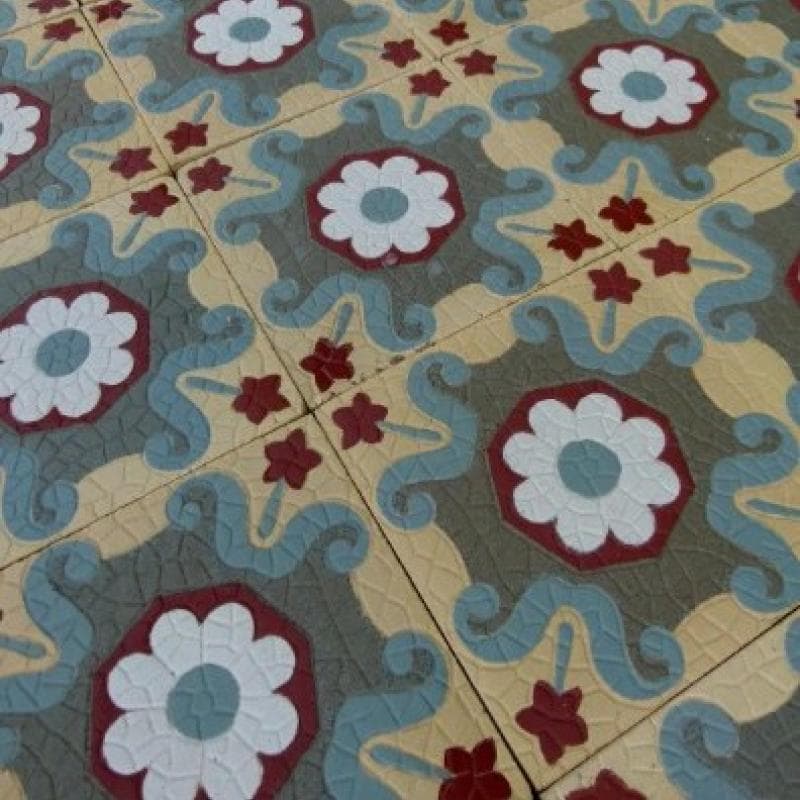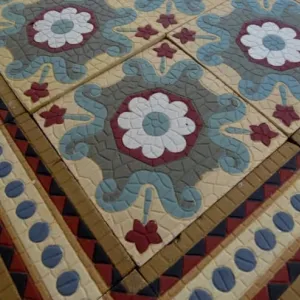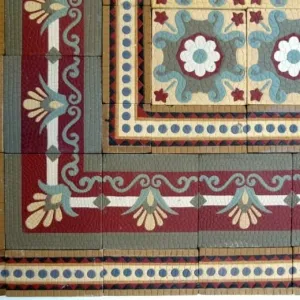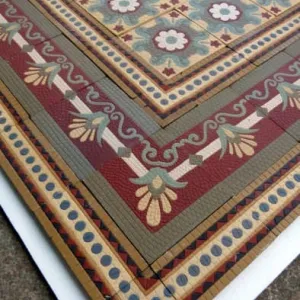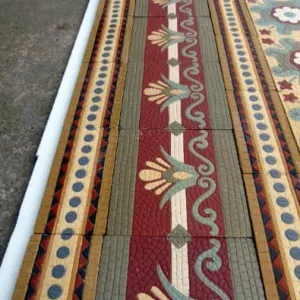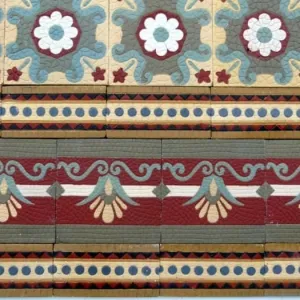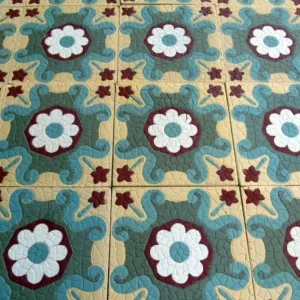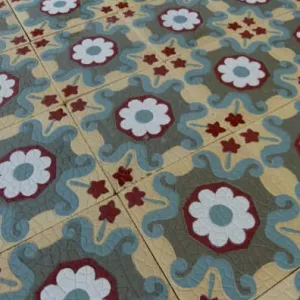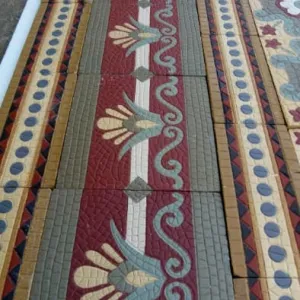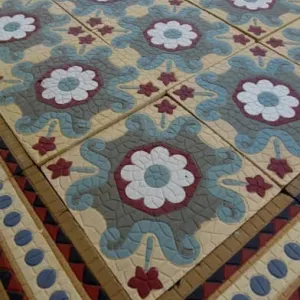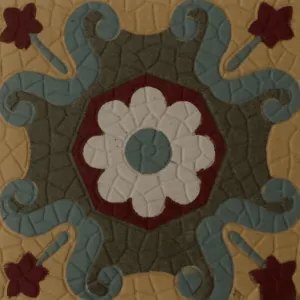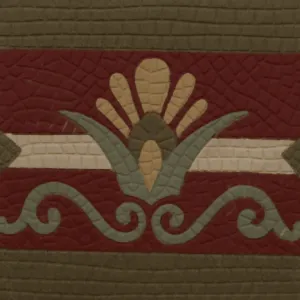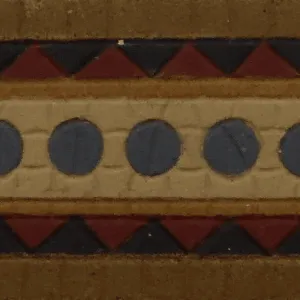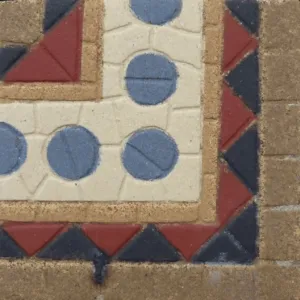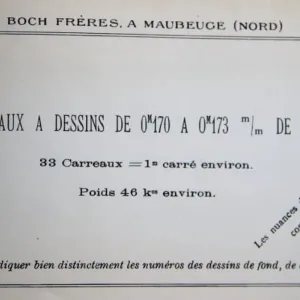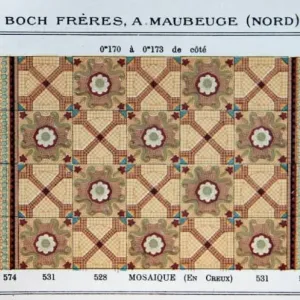A lattice surfaced antique French ceramic with triple borders
This beautifully restored ceramic floor, complete with its original triple border tiles, is a fine example of the quality work produced by the renowned and award winning Boch Frères, Maubeuge factory in the late 19th and early 20 century. Each tile is reverse stamped with the makers name, a subtle detail that speaks to the authenticity and attention to detail of its maker.
Though crafted in France, this floor was reclaimed from a period home in Belgium, close to Namur, alongside several other floors.
The main field tiles and full-size borders each measure approximately 6.7 inches square, are 0.8 inches thick, and weigh over 3.7 pounds—a robust ceramic with a textured, relief surface and richly colored slip. As with any hand-crafted piece, gentle variations in tone lend individuality and charm.
A half-size domino border adds a thoughtful finishing touch, featuring a warm and balanced palette of caramel, teal, sea green, bordeaux, mustard, and off-white. The floors classic tessellation is subtle.
Original pages from the Boch Frères catalogue, dating between 1900 and 1908, are included in the photo gallery to offer added context and provenance.
The tiles have cleaned beautifully, with the ceramic in excellent condition—just a small number of tiles show edge nibbles or samll groutable chips. Thanks to their high firing, the tiles are suitable for both indoor and outdoor use and they will work well with underfloor heating systems.
The tiles arrive ready to relay and will bring timeless beauty and durability to a new setting.
Tile inventory (approximate):
- Field Tiles – 225 tiles – 70 sq ft
- Large Border Tiles – 54 tiles incl. 4 corners – 32.3 linear ft
- Half size Border Tiles – 132 tiles incl. 8 corners – 75.9 linear ft
- Total surface - 111 sq ft.
Note:-
Our antique tiles were originally handmade in single or two tile molds. Pre-computer fabrication these molds were machined by hand & the colour slips to create the tile were mixed by measure and eye. When firing the tiles, the kiln temperatures of c.1,100F degrees could also be variable. The result of this production process is that tiles made during this period of non-automation often display subtle size & thickness variations and there can be tonal variations in colors, all of which add to their charm and uniqueness. When photographing a floor, we always take a random section so that it is representative of the whole in tones and patina.
A rigorous quality control during the restoration process will include in the sale any tiles with groutable small chips and edge nibbles, expected of tiles more than 100 years old, but include for free any with larger defaults as rejects, which the tiler can then use for offcuts.
Can we help?
If you can provide a technical drawing, or a simple sketch with key dimensions, we are happy to assist in evaluating and recommending the best layout of the floor in your area of choice. Click here for more details
